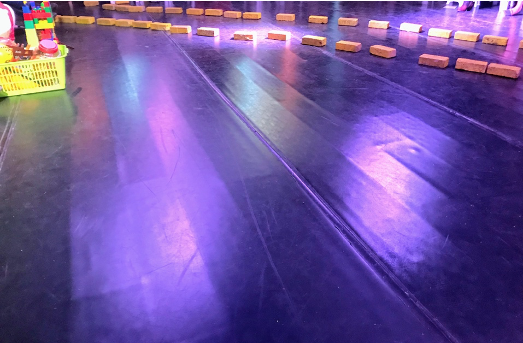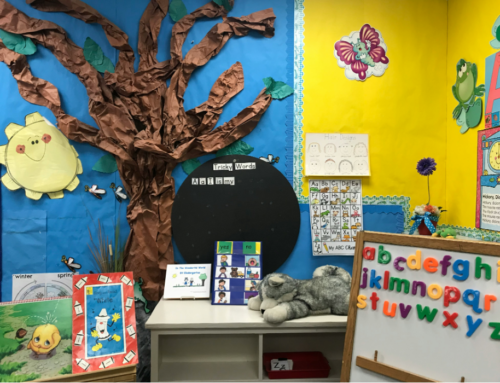Towards the end of his life, Jacob Moreno, the founder of psychodrama, published a recollection of an interchange with Sigmund Freud:
- Well Dr. Freud, I start where you leave off. You meet people in the artificial setting of your office. I meet them in the streets and in their homes, in their natural surroundings. You analyze their dreams. I give them the courage to dream again. You analyze and tear them apart. I let them act out their conflicting roles and help them put the parts together again (2011, 68).
Psychodrama is a therapeutic modality that invokes role-play games to rework the subject’s relationship to herself and others. Psychodrama began in the shadows of World War I. In a social world cut by displacement and ethnonationalism, Moreno devised a theatre-based therapeutics, inspired by the way children improvised endings to fairytales (Nolte 2014). Psychodrama channels the spontaneity of children’s play to reframe suffering within “dramatic reality,” wherein dreams and fantasies gain tangible expression on stage (Pendzik 2006). Psychodrama arrived in Israel by way of a Hungarian Holocaust survivor (Kulcar 1976) and institutionalized in the 1950s, as clinicians grappled with the contradictions and violence of realizing a Jewish homeland. Today, psychodrama is widely practiced in Israel in sites ranging from public psychiatric hospitals to activist groups.

A stage prepared by community psychodrama participants in Central Israel
In summer 2019, I conducted exploratory fieldwork on psychodrama’s evolution in Israel. I sought to lay the groundwork for understanding how experimentation with therapeutic technique unfolds in relation to conditions of political volatility and in the shadows of catastrophe. I observed the creation of a therapeutic theatre production in a low-income neighborhood, attended clinical lectures and workshops, and conducted professional genealogical interviews with practitioners. I trace a line of inquiry that unfolded from one such interview with a young clinician, Idan. I explore Idan’s suggestion that if I am to understand the work of psychodrama in Israel, I must read See Under: Love by David Grossman. Published in 1986, it is a highly experimental piece, one of the first Israeli novels to engage experiences of the Holocaust in the form of fiction. For Idan, the novel raises the question: under what conditions is it possible to hear the story of another? In what follows, I meditate on what it is for an ethnographer to attend to her interlocutor’s reading suggestion and place his concerns in conversation with my research questions. How does the experimental structure of the novel put pressure on the concept of autobiographical narrative in psychotherapy? What pictures of therapeutics and self-knowledge emerge from the text?
The first section of the novel opens through the voice of a nine-year-old child, Momik, the only child of Holocaust survivors, who is trying to piece together the ‘coded’ language of his parents, the language of ‘Over There.” For Momik, learning this language is not simply learning to recognize the geography of Poland or making sense of words like army work, deportation, and protection. Piecing together this language of Over There is intimate. For Momik, this learning consists of realizing that he should pretend to sleep serenely while his parents watch him sleep before they “begin their nightmares.” It is learning that no amount of strength can scrub the ink off his grandfather’s arm during bath time. Momik senses that all of this has something to do with the Nazi monsters that his parents speak about. He believes if he knew what a Nazi monster was, he could stop them. Convinced that his Aunt Bella will provide answers beyond those of his parents, Momik camps out at an empty table outside her grocery store. In the past, Momik’s questions had elicited a snappy, “There are some things that, thank god, a nine-year-old boy doesn’t have to know yet!” (13). But one day:
[Aunt Bella] let it slip out that the Nazi beast could come out of any kind of animal if it got the right care and nourishment, and then her fingers shook a little and Momik saw he wasn’t going to get any more from her this time (13).
This answer, which Momik takes literally, catalyzes an experiment to lure the Nazi monster into his basement. He gathers different sick animals from around the neighborhood and places them in cages downstairs, hypothesizing that his care might produce the monster. When an extended period of nourishing stray animals in the basement fails to produce any Nazi monsters, Momik decides to consult the local library’s Holocaust section in order to gather information on that which the grown-ups will not speak. In the library, Momik encounters for the first-time graphic pictures of mass graves, sexual torture, and death camps. However, he cannot yet connect his archival discoveries to the intensities, silences, and ruptures in his domestic routine.
As Momik presses ask Aunt Bella for more information about the information he finds in the library, he continues to find her responses wanting. In a final attempt to reach some sort of understanding, Momik decides he will try to lure the ‘Nazi monster’ into his basement. He pastes traced drawings of the death camps on the walls and then ‘kidnaps’ his grandfather along with other survivors from the neighborhood. He has inadvertently produced a museum, a museum that elicits reactions of fright and horror from the survivors as they are forced to re-encounter the landscapes and mechanisms of their suffering. It is only in relation to the survivors’ responses to the ‘exhibit’ that Momik begins to grasp catastrophe. In this moment, what Momik knows rapidly transforms from feeling like not enough to being too much to bear. In the encounter between the survivors and the images, the narrator remarks that the stories told are “things no one would ever believe” and “Momik remembered them forever and ever and instantly forgot them” (1989, 84). While the encyclopedia entries had catalyzed a hunger for information, these stories in the basement make Momik want to “vomit everything, everything he’d eaten for lunch and everything he’d learned about lately, including himself” (85). It is all too much and Momik faints. When he awakes, the voice of the narrator is now authorial and distant. We learn that his elementary school has arranged for him to transfer to a “special school near Netanya” where he can eat a healthy diet and breathe fresh air.
In his formulation of inordinate knowledge, Stanley Cavell explains it as “knowledge that can seem excessive in its expression, in contrast to mere or bare or pale or intellectualized or uninsistent or inattentive or distracted or led, archived knowledge, an opposite direction of questionable, here defective, or insipid, or shallow, or indecisive expression” (2010, 84). In her commentary on this formulation, Veena Das (2019) has emphasized that inordinate knowledge is not a type of knowledge per se. Rather, she suggests, the question we might ask is how knowledge “becomes weighty with consequences” within a social world (2019, 1).
In this first section of See Under: Love, how is it then that knowledge of catastrophe becomes inordinate, replete with affect, for Momik? What is striking is that it is in the basement that Momik’s relationship to catastrophe shifts from being one characterized by an insatiable quest for information to the unbearably visceral need to expel that which he has learned. Watching his grandfather interact with the quasi-museum he has built raises enormous ethical questions for Momik. In this scene, Momik learns his own capacity for cruelty. Momik’s nausea is thus significant; it is not only a nausea expelling the stories to be remembered forever and instantly forgotten but also a vital nausea, one in which he attempts expel the knowledge of this version of himself, who actualizes the cruel.
The picture of the monster in See Under: Love offers another way of thinking about violence different from the concept of the ‘moral monster’ that Bersani and Phillips (2008) have critiqued. Noting the recent shift in popular discourse to explain the actions of serial killers in moralistic rather than psychological terms, the authors explore how expelling the killer to the realm of the “monstrous” serves as a problematic disavowal of our own capacity for evil. For Grossman too, the monster is not external to the human form or everyday life. The capacity for monstrosity lies within us. His novel teaches that hearing the story of another is not necessarily salvific, that telling does not necessarily equate hearing or healing. I suggest that this lesson carries a particular weight in the realm of psychodrama, where the aesthetic and therapeutic technique of role reversal leads to complex ethical and political encounters with othered regions of both one’s own psyche and that of one’s neighbors. As I continue towards my dissertation work, I ask, how do theatre participants rework aesthetic traditions to render experience intelligible in dramatic reality? What is it to heal without monsters?
References:
Bersani, Leo, and Adam Phillips. 2008. Intimacies. University of Chicago Press.
Cavell, Stanley. 2010. “The Touch of Words” In Seeing Wittgenstein Anew. Edited by William Day and Víctor J. Krebs. Cambridge: Cambridge University Press.
Das, Veena. 2019. “Inordinate Knowledge and Self Making.” Smuts Memorial Lecture Series. Cambridge. UK 7 October 2019.
Grossman, David. [1987]1989. See Under: Love. New York: Farrar Straus Giroux.
Kulcsar, IS. 1976. “The Duo-Drama.” Mental Health and Society 3 (5–6): 5–6.
Moreno, J. L. 1946. Psychodrama. First Volume. New York: Beacon House.
———. 2011. Autobiography of J.L. Moreno M.D. [Great Britain]: North-West Psychodrama Association.
Nolte, John. 2014. J. L. Moreno and the Psychodramatic Method: On the Practice of Psychodrama. New York: Routledge, Taylor & Francis Group.
Pendzik, Susana. 2006. “On Dramatic Reality and Its Therapeutic Function in Drama Therapy.” The Arts in Psychotherapy 33 (4): 271–80.
Cite as: Katz, Talia. 2021. “Healing without Monsters: On Psychodrama and Therapeutic Experimentation in Israel.” American Ethnologist website, 14 January 2021, https://americanethnologist.org/features/reflections/healing-without-monsters-on-psychodrama-and-therapeutic-experimentation-in-israel
Talia Katz is a PhD Student in the Department of Anthropology and Fellow at the Center for Medical Humanities and Social Medicine at Johns Hopkins University. Her research explores how the ethics and aesthetics of theatre transform clinical responses to trauma in Israel.




